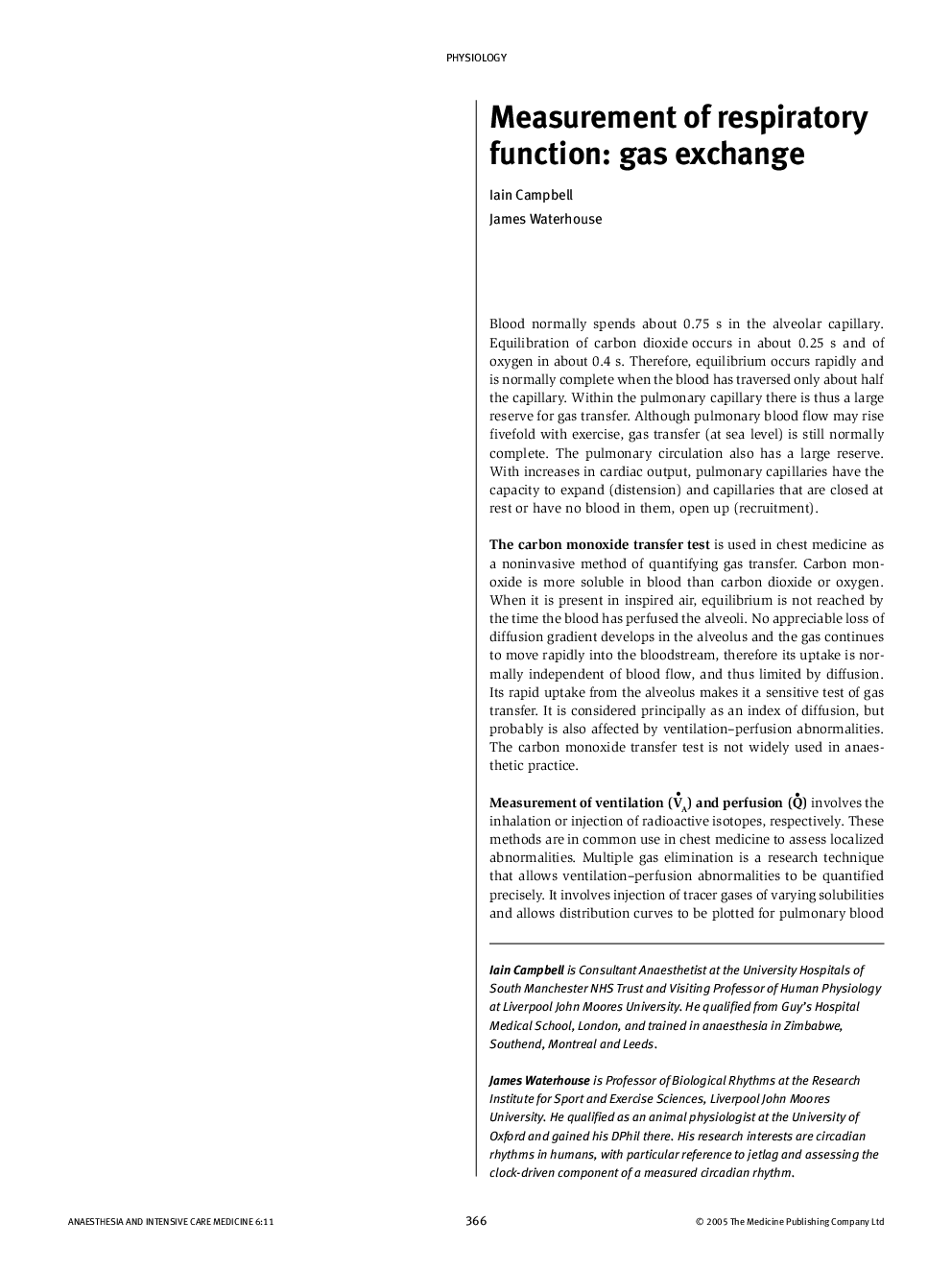| Article ID | Journal | Published Year | Pages | File Type |
|---|---|---|---|---|
| 9089450 | Anaesthesia & Intensive Care Medicine | 2005 | 4 Pages |
Abstract
Oxygen passes from the atmosphere to the cells along a concentration gradient (down a cascade) via the alveoli, the arteries and the capillaries. Arterial (and thus cellular) oxygenation depends on the efficient matching of ventilation with pulmonary blood flow. Over-perfused and under-ventilated or non-ventilated alveoli lead to hypoxaemia and over-ventilated, under-perfused alveoli to wasted ventilation (dead space). The average (or ideal) partial pressure of oxygen in arterial blood can be calculated. Gas exchange and its impairments can be assessed from measurements of gas volumes and partial pressures in arterial and mixed venous blood and in expired air. Alveolar-arterial gradients, pulmonary shunt and physiological dead space can all be calculated. There are more complex and sophisticated ways of assessing gas exchange, such as scanning blood flow and ventilation with radionuclides and the use of gases with varying solubilities to assess gas exchange, but these are not commonly used in clinical anaesthetic practice.
Related Topics
Health Sciences
Medicine and Dentistry
Anesthesiology and Pain Medicine
Authors
Iain Campbell, James Waterhouse,
